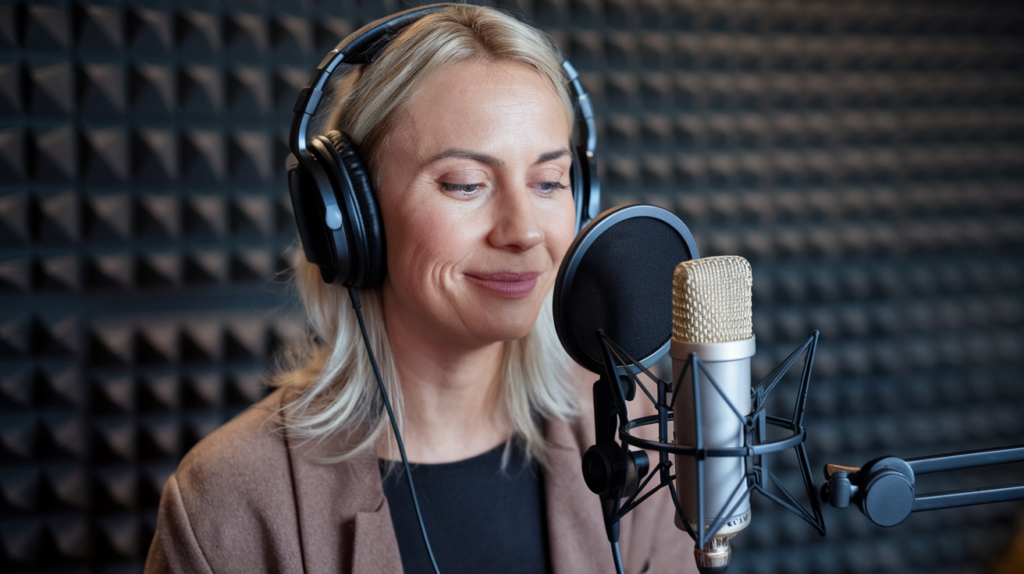Key Takeaways
- Censorship Challenges: Russian media faces stringent censorship that limits authentic storytelling, affecting audience trust and engagement with content.
- Cultural Misalignment: Understanding and adapting to diverse cultural values is essential for Russian media to connect with international audiences effectively.
- Trust Issues: Government control over narratives can erode credibility, leading viewers to seek more transparent and reliable information sources.
- Technological Adaptation: Traditional media outlets must embrace digital platforms and innovative technologies to stay relevant and engage modern audiences.
- Importance of Localization: High-quality voiceover talent is crucial for making content relatable, as it helps convey emotional depth and cultural nuances effectively.
- Quality Production Standards: To build audience trust, creators should prioritize high production values alongside authentic narratives that reflect multiple perspectives.
Ever wondered why Russian media struggles to adapt in a rapidly changing landscape? As global audiences demand more diverse and relatable content, the challenges facing Russian media become increasingly apparent. From censorship issues to cultural disconnects, these problems hinder effective communication and engagement.
You might be surprised at how these obstacles impact not just the creators but also viewers seeking authentic narratives. Understanding these adaptation issues is crucial if you want to grasp the complexities of modern media in Russia. Let’s dive into the heart of this topic and uncover what’s really holding back Russian media from thriving on a global stage.
Overview of Russian Media Adaptation
Russian media adaptation faces significant challenges in an evolving global landscape. Censorship remains a critical issue, restricting the flow of information and shaping narratives. This often leads to a disconnect between content creators and audiences, who yearn for authentic stories.
Cultural differences further complicate adaptation efforts. Russian media must navigate various cultural contexts while trying to resonate with international viewers. Misunderstandings can arise due to differing values or societal norms, affecting how messages are received.
Technology also plays a role in these challenges. The rise of digital platforms demands innovative approaches, yet many traditional media outlets struggle to adapt their formats and styles accordingly. Embracing new technologies is essential for reaching broader audiences effectively.
Moreover, the demand for localized content increases as global competition intensifies. Russian media needs skilled voiceover talent capable of delivering nuanced performances that reflect local dialects and emotions. Engaging voice actors can help bridge gaps, making content more relatable.
Addressing censorship issues, cultural nuances, technological advancements, and the need for high-quality voiceover performances is vital for successful media adaptation in Russia. Understanding these elements enhances content creation strategies and audience engagement efforts.
Key Problems in Russian Media Adaptation
Russian media faces significant challenges in adapting to an evolving global landscape. Understanding these issues is crucial for improving content creation and audience engagement.
Censorship and Government Control
Censorship in Russia imposes strict limitations on media outlets, significantly affecting their ability to convey authentic narratives. The government closely monitors content, often shaping it to fit specific agendas. This control restricts the diversity of voices and perspectives available, leaving audiences craving genuine stories that reflect real-life experiences. With limited freedom of expression, creators face obstacles when trying to engage with international audiences who expect transparency and honesty in storytelling.
Cultural Misalignment
Cultural misalignment complicates how Russian media connects with global viewers. Each culture possesses unique values and societal norms that influence perceptions and expectations. When Russian media fails to recognize these differences, misunderstandings can lead to disinterest or even offense among international audiences. To bridge this gap, it’s essential for content creators to immerse themselves in various cultural contexts, ensuring that messages resonate across borders without losing their authenticity.
Impact on Audience Perception
Audience perception of Russian media is significantly shaped by various factors, including trust and credibility issues. When censorship affects the flow of information, it can create skepticism among viewers. They may question the authenticity of the content presented to them. This skepticism leads to a disconnect between creators and audiences, making it challenging for media to engage effectively.
Trust and Credibility Issues
Trust forms the backbone of audience engagement. In environments where censorship prevails, narratives often shift to align with government agendas, eroding trust in media sources. Viewers may find it difficult to rely on information that feels curated or manipulated. This perceived lack of transparency diminishes credibility and leaves audiences seeking alternative sources for news and entertainment.
Furthermore, when cultural nuances are overlooked in content creation, misunderstandings arise. These misunderstandings can alienate global viewers who might feel misrepresented or confused by cultural references that don’t resonate with them. It’s essential for creators to invest time in understanding their target demographic’s values and preferences.
In an age where digital platforms dominate consumption habits, failing to adapt can further damage perceptions of credibility. Audiences expect high-quality production standards alongside genuine storytelling—both elements crucial for earning their trust.
Ultimately, addressing these trust and credibility issues will enhance how audiences perceive Russian media. By prioritizing authentic narratives that reflect diverse voices while maintaining high production values, creators improve their chances of connecting meaningfully with both local and international viewers.
Technological Challenges
Technological challenges hinder Russian media adaptation significantly. Many traditional outlets struggle to transition into the digital realm, facing issues like outdated formats and styles. Adapting to streaming platforms and social media demands agile responses, yet some organizations lag behind.
Access to high-quality voiceover talent often poses a barrier as well. Understanding local dialects helps ensure that content resonates with audiences. Without skilled voice artists delivering nuanced performances, messages can lose their intended emotional impact. It’s crucial for creators to collaborate with versatile voice actors who can bring authenticity to various projects.
Moreover, the rapid evolution of technology means staying current is vital. Innovations in audio and video production create opportunities for enhanced storytelling. However, if you’re not embracing these advancements, your content risks appearing stale or unprofessional.
Localization extends beyond language; it involves adapting cultural references and humor too. When done correctly, this approach connects deeply with viewers on a personal level. Yet, without proper technological tools or expertise in localization techniques, achieving this connection becomes challenging.
Engaging audiences requires more than just quality content; it demands an understanding of how technology shapes viewer experiences today. By investing in modern production equipment and talented voiceover professionals, you’ll elevate your media offerings and improve audience engagement globally.
Navigating these technological hurdles allows Russian media creators to present stories effectively while meeting consumer expectations for quality and relatability in today’s fast-paced environment.
Conclusion
Navigating the complexities of Russian media adaptation requires a focused approach to overcome significant challenges. You must understand the impact of censorship on narrative authenticity and audience trust. Bridging cultural divides is essential for crafting messages that resonate globally without losing their roots.
Embracing technological advancements is equally crucial. By investing in modern production tools and quality voiceover talent, you can enhance storytelling while meeting audience expectations. Ultimately, prioritizing genuine narratives that reflect diverse perspectives will help reshape perceptions of Russian media both locally and internationally.
Addressing these key issues not only paves the way for more effective communication but also fosters deeper connections with viewers who seek transparency and relatability in today’s dynamic landscape.
Frequently Asked Questions
What are the main challenges faced by Russian media today?
Russian media faces several key challenges, including censorship, cultural disconnects, trust and credibility issues, and technological hurdles. Censorship limits the free flow of information and shapes narratives to fit government agendas. Cultural differences can lead to misunderstandings with global audiences. Trust issues arise from perceived biases in reporting, while adapting to new digital platforms remains a struggle for many traditional outlets.
How does censorship impact Russian media?
Censorship significantly restricts the diversity of voices in Russian media by controlling information flow and shaping narratives. This creates a lack of authentic stories that resonate with both local and international audiences, hindering effective communication and audience engagement.
Why is cultural understanding important for Russian media?
Cultural understanding is crucial because it helps content creators connect with diverse global audiences. Misalignments can lead to disinterest or offense; therefore, immersing in various cultural contexts ensures messages resonate authentically without losing their intended meaning.
What technological challenges does Russian media face?
Russian media struggles with adapting to digital platforms like streaming services and social media. Many traditional outlets lag behind in format adaptation, which affects their ability to engage modern audiences effectively. Access to skilled voiceover talent is also essential for resonating with local dialects.
How do trust and credibility affect audience perception of Russian media?
Trust and credibility are vital for audience engagement; when censorship influences narratives, skepticism among viewers grows. This disconnect prompts audiences to seek alternative news sources, especially if they feel misrepresented or see low-quality production standards in reporting.
What steps can improve the quality of Russian media content?
To enhance quality, creators should focus on authentic storytelling that reflects diverse voices while maintaining high production values. Investing in modern equipment and skilled professionals will help overcome technological barriers and elevate content offerings to meet consumer expectations effectively.







